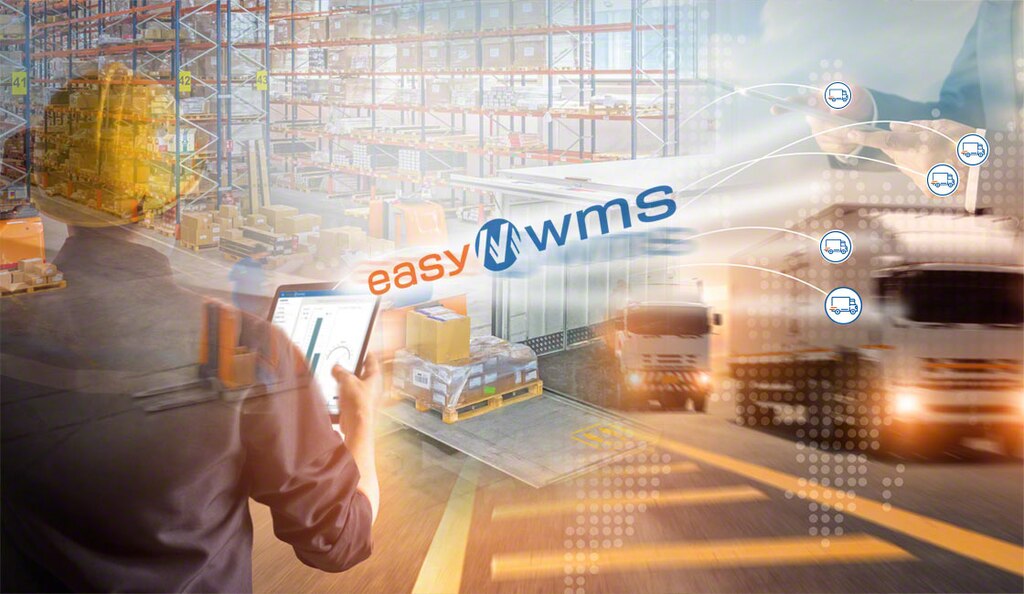
Outbound logistics: keys to efficient distribution
Outbound logistics involves process such as order picking and consolidation, goods dispatch, and the transportation of products to end customers or other company centers.
To maximize the efficiency of your outbound logistics processes and make your supply chain more competitive, your best bet is to automate both the management of your operations and the movement of your products.
What is outbound logistics?
Outbound logistics is a supply chain stage responsible for ensuring the delivery of the finished product to the end customer. This logistics phase also encompasses shipments of goods to other company facilities, i.e., interim warehouses, physical stores, suppliers, and production centers.
Outbound logistics, also known as distribution logistics, includes order processing and consolidation, as well as the packaging, dispatch, and transportation of products to their corresponding destination.
The main aim of outbound logistics is to ensure that the products are delivered to the final destination in the correct quantities and at the right time. To make their outbound logistics operations effective, businesses need to optimize order picking and streamline the goods management, loading, and shipment processes with the transportation agencies.
The role of outbound logistics is crucial: it doesn’t matter whether your upstream operations (e.g., inbound logistics and putaway) run smoothly if the last step in the supply chain is inefficient.
Outbound logistics phases
Outbound logistics addresses the last stages of the supply chain, which begin in the warehouse and end with the delivery of the order to its destination.
- Order picking. This is one of the core activities of any logistics facility. Order processing is the operation charged with preparing the products requested by customers to be dispatched in the form of orders. These can be sent to end customers, to distribution centers (DCs), or to other company warehouses and stores. One of the main goals of outbound logistics is to deliver the highest number of orders at minimum cost and in the shortest time.
- Order consolidation. This consists of organizing and sorting orders before dispatching them, grouping them by final destination. The order consolidation process normally takes place in an area set aside for this purpose or directly in a consolidation warehouse. In facilities that ship full pallets, the goods are usually sorted in front of the loading docks, by order or transportation route. But for businesses that distribute small items, the products are grouped in the consolidation area. The purpose of this operation is to lower shipping and delivery costs for each order while cutting down on unnecessary travel in the warehouse.
- Packing and labeling. Packing refers to the conditioning and packaging of orders for their subsequent dispatch. In this phase, the type of packaging material is selected based on the size, number, and specific characteristics of the products. A shipping label is placed on the outside of each box, containing the order reference number, destination address, and, occasionally, its tracking number. The label also contains a barcode that, once scanned, accesses the information linked to the shipment, ensuring product traceability.
- Truck loading. This process involves placing the products on the truck to transport them to their destination (a DC, another warehouse, or directly to the end customer). To guarantee efficient truck loading, it’s important to group orders by transportation route and distribute the goods based on their weight and volume. Proper truckload planning is crucial in outbound logistics because once the orders are on the vehicle, it’s very difficult to undo a mistake.
- Order transportation and delivery. Management of the last mile — the last leg of the goods delivery process — is one of the main challenges of outbound logistics. From the time they leave their last distribution point until they reach their final destination, packages face numerous obstacles. Some of these impediments are related to the transportation itself, while others stem from the type of product being delivered. Optimizing costs in this stage can be the key to standing out from your competition and having productive and effective outbound logistics operations.

Differences between inbound and outbound logistics
Although there are relevant differences between inbound and outbound logistics, there’s one inherent difference between them: the former deals with supply, and the latter satisfies customer demand. That is, inbound logistics is mainly tasked with goods procurement and supply, while outbound logistics focuses on operations relating to product distribution.
On a logistics level, goods receipt, part of inbound logistics, manages the unloading of products in the warehouse, their labeling, and stock control. Goods dispatch, linked to outbound logistics, consolidates orders and loads them onto the transportation vehicles based on their route and other factors. They are then delivered to DCs or directly to end customers.
Lastly, the type of product managed in the two processes is also different. While inbound logistics tends to work with raw materials or semi-finished goods, outbound logistics generally distributes finished products to distributors, retailers, or end consumers.
Yard Management: efficiency in outbound logistics
A warehouse management system (WMS) is your best ally for maximizing effectiveness in outbound logistics. A WMS can optimize all outbound logistics phases, from order picking to goods dispatch.
For this last outbound logistics stage, a WMS like Easy WMS from Interlake Mecalux features the advanced module Yard Management System (YMS). This program lets you sync loading dock operations and plan shipments. The software facilitates seamless communication between customers, logistics providers, and drivers: it automatically notifies the carrier of the most relevant data, e.g., available dock and outbound products.
Easy WMS also offers the Multi Carrier Shipping Software module, an advanced functionality that speeds up the goods dispatch process by coordinating with the software of the main transportation agencies. This program organizes packing, labeling, and shipping operations to ensure that no errors occur in this logistics phase.

Outbound logistics: the last hurdle in the supply chain
Your outbound logistics performance determines how efficient your business is. At the same time, it indicates your level of customer satisfaction. Distribution logistics is a vital supply chain phase. Why? Regardless of the previous phases, outbound logistics is charged with making sure the goods arrive at their stipulated destination and achieving the ultimate goal: meeting customer needs in the best possible way.
Looking to streamline order delivery to improve your customer satisfaction? Don’t hesitate to contact us. Interlake Mecalux specializes in optimizing outbound logistics operations for companies in any industry, with customized solutions that fit all types of needs.
